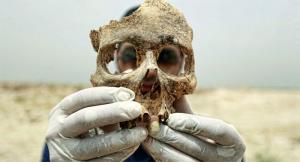Scientists from the Australian Facility for Experimental Research (AFTER), which specializes in crime scene reconstructions, have found that human remains tend to move significantly during decomposition, said lead researcher Alyson Wilson revealed.
Wilson, a student at CQUniversity, used special cameras to film the decay of a donor body at 30-minute intervals over a 17-month period.

Researchers in Australia have just found evidence that the remains of the dead are still… moving.
The researchers were shocked to find that the human body was moving not only during the early stages of decomposition, but throughout the entire 17-month period of filming, with the most significant movement observed by corpse limbs.
“What we found was that the arms were moving significantly,” Wilson said.
Scientists believe the movement can be explained by the process by which the body’s ligaments contract as they dry.
The finding has not been published in a mainstream scientific journal, but Wilson and her colleagues believe the finding is important for helping police investigate crime scenes and estimate the exact time of death. as well as elucidate possible causes of death.
Some of Wilson’s previous research projects have also focused on differences in body decay between the Northern hemisphere and the Australian environment, where she also used a time-lapse camera to test her hypotheses.
“Until we had the Experimental Research Facility, most of the scientific research on how bodies decompose was based on the Northern Hemisphere region, where the climate was different, the weather was different, and even Insects can be different,” Wilson said.

